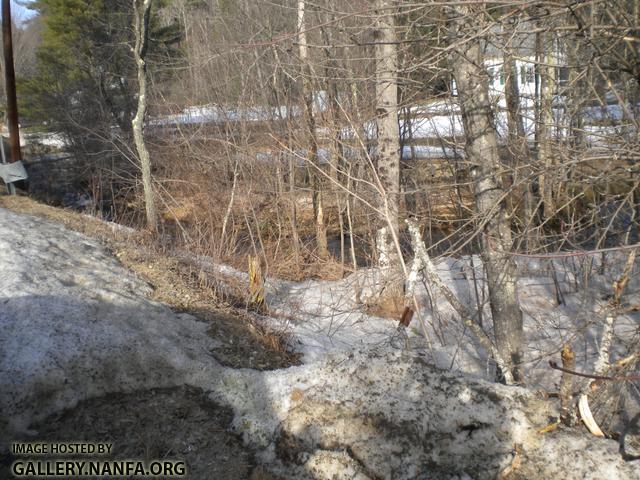Martin/rice brook (maps change its name to rice brook in Richmond but everyone calls it martin brook) from the place where it meets South Branch to the bridges in someones lawn in Swanzey has a rich mix of long nosed dace (where habitat is appropriate), white sucker, fallfish, common shiner, stocked brook trout, and chain pickerel. At the other bridge in Swanzey (which has recently got a beaver dam by it) I have caught stocked trout and shiners fishing in the past back before i could ID shiners (given their size I guess common, fallfish, or golden). I tried sampling this spot last summer but the deep holes in that area prevented it.
The interesting thing is from here it leaves the road until richmond, where it crosses the road at two bridges. One on route 32, one on mill road.
By fishing the 32 road I ONLY catch native brook trout, and fishing/sampling the other bridge i seen only brook trout and slimy sculpin.
So I wonder what causes this change over in species? What happens when the brook leaves the road that causes such a decline in species?
This is one thing I am curious on, I even braved the cold for a few minutes and sampled a riffel near the route 32 bridge in Richmond trying to find evidence of other species here (I assume they won't be able to get up the waterfall from an old mill just a bit upstream from here).

As you can tell since this is not a trip report I had no luck. Not that you tend to find much in most New England riffles anyways. (I cut sampling short when I found my waders were not exactly watertight and it slowly was leaking into the boots. It was cold but not too much different from getting snow in a boot so I didn't give up right off, but didn't sample long either).
I talked to two neighbors who regularly fish this stretch in Richmond. One says they ONLY get native brookies here, the other says you occasionally get other fish here but it is very rare and they mill falls stops them from progressing above it.
So I wonder, what happens to cause the species change over? Is their some kind of barrier? Do the occasional stray really go up here? I'd like to find info on it but the only info I can find online on this stream is unfortuneately from me.







